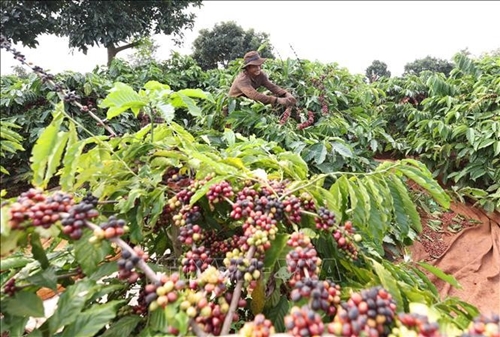Leading the growth were agricultural products, with exports valued at 21.49 billion USD, up 17%. This was followed by forestry products at 10.38 billion USD, up 8.6% and seafood at 6.06 billion USD, up 13.8%.
    |
 |
|
Harvesting coffee on a plantation owned by the Vietnam National Coffee Corporation |
Many of Vietnam's key export products recorded significant value growth.
Coffee exports saw their value soar by 65.1% to 6 billion USD, driven by a 53% increase in the average price per ton, even with a small 7.6% rise in volume. Similarly, the value of cashew nut exports grew by 17.4% to 2.79 billion USD despite a slight decline in volume.
Pepper exports also saw their value increase by nearly 30% to almost 1 billion USD, largely because the average price jumped by 47%. Rubber followed a similar trend, with a 13.9% increase in export value to 1.61 billion USD, despite a minor dip in volume.
Rice exports saw a 15.9% decline in value to 2.81 billion USD, due to a significant 18.4% drop in price, even as export volume increased.
Although fruit and vegetable exports saw a modest 0.9% increase to 3.92 billion USD. Shipment to China, the largest market, fell by 24.3%, while exports to the US surged by 65.5%.
Six product categories each generated a surplus of over 1 billion USD, led by wood products (7.7 billion USD) and coffee (5.78 billion USD), while shrimp and pangasius also performed well. However, some key imports, including animal feed, cotton, and corn, ran a trade deficit.
Asia remained Vietnam's largest export market, accounting for 42.6% of the total value. Notably, exports to Europe surged by 43.1%. The U.S., China, and Japan were the top three individual markets.
Source: VNA